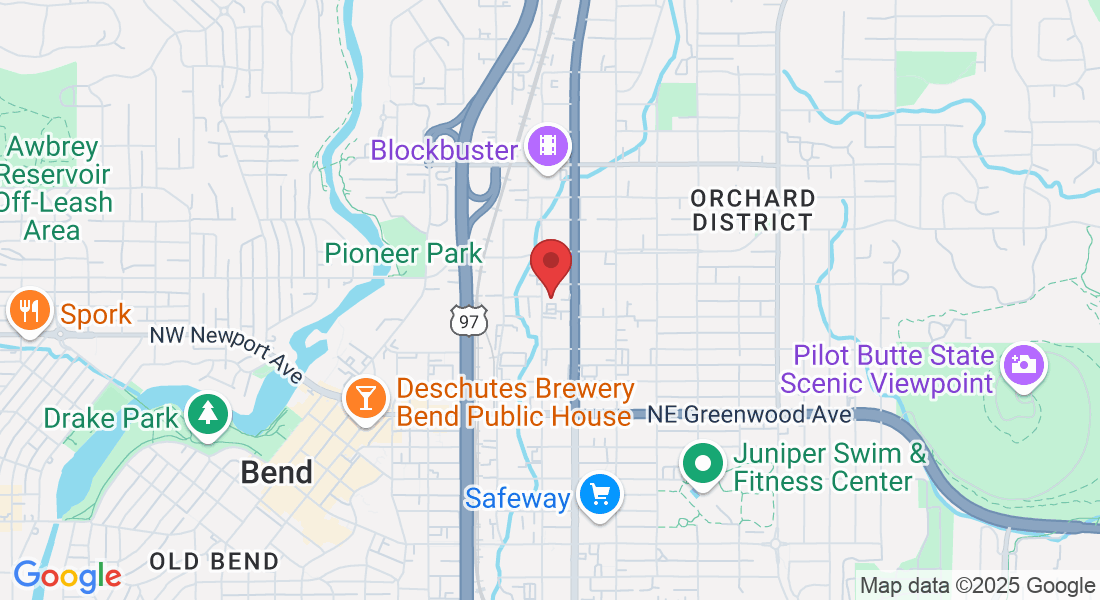Your Source for All Things Physical Therapy in Bend Oregon
The PhysioBLOG
Here, we share informative articles and insights that aim to help you achieve your full potential through our fitness-focused approach to rehabilitation. Our team is dedicated to providing you with valuable tips and techniques that can help you overcome any obstacle, whether you're recovering from an injury, surgery, or striving to build strength and wellness for life.
Stay up-to-date with our latest posts & empower yourself with elegantly simple techniques for optimal health & wellness.

The Bend Physical Therapy Guide to Carpal Tunnel Syndrome: A Non-Surgical Solution
Please Note: The information provided on our website is intended for general education and is not a substitute for professional medical advice. Each individual's situation and body are different. Therefore, what may work for one person may not work for another. We care about your well-being and advise you to reach out to us to discuss your specific needs before implementing any advice from our website.
Key Takeaways:
Carpal Tunnel Syndrome (CTS) is characterized by signs and symptoms such as numbness, tingling, and weakness in the hand and fingers. It is important to recognize these symptoms early on to seek appropriate treatment.
Diagnosis of CTS typically involves a physical examination, medical history review, and specialized tests such as nerve conduction studies. Proper diagnosis is crucial for determining the most effective treatment plan.
Physical therapy plays a significant role in the treatment of CTS. Therapeutic exercises, splinting, and manual techniques can help alleviate symptoms, improve hand function, and prevent further progression of the condition.
Introduction
Carpal Tunnel Syndrome affects the median nerve, causing pain, numbness, and weakness in the hand and wrist. This guide provides valuable information on the condition, its causes, symptoms, and available treatment options.
Understanding Carpal Tunnel Syndrome
Carpal Tunnel Syndrome occurs when the median nerve, which runs from the forearm to the hand, becomes compressed or squeezed within the carpal tunnel. This narrow passageway, located in the wrist, can become inflamed and swollen due to various factors such as repetitive hand movements, injury, or underlying health conditions.
Unique Insights into Carpal Tunnel Syndrome
This guide delves into lesser-known details about Carpal Tunnel Syndrome. It explores how the condition can be triggered by factors such as pregnancy, obesity, and hormonal changes. Additionally, it discusses the importance of early detection and prompt treatment to prevent further complications and maintain optimal hand functionality.
Unveiling the True History of Carpal Tunnel Syndrome
The true history of Carpal Tunnel Syndrome dates back to the 19th century when it was first described by Sir James Paget. Since then, numerous advancements have been made in understanding the condition, leading to improved diagnostic techniques and treatment approaches. The evolution of medical knowledge and technological innovations have shaped the management of Carpal Tunnel Syndrome, offering patients better outcomes and quality of life.
By exploring the various aspects of Carpal Tunnel Syndrome, this guide seeks to provide a comprehensive resource for individuals seeking information and guidance on this prevalent condition. From understanding the causes and symptoms to exploring treatment options and preventive measures, this guide aims to empower readers with knowledge to make informed decisions about their health and well-being.
Signs and Symptoms of Carpal Tunnel Syndrome
Carpal Tunnel Syndrome presents various signs and symptoms that can indicate its presence. These can include:
Pain or discomfort in the hand or wrist
Numbness or tingling in the fingers or thumb
Weakness in the hand or difficulty gripping objects
Burning or itching sensation in the palm or fingers
Hand or wrist stiffness, especially in the morning
Radiating pain that extends from the hand up the arm
These signs and symptoms of carpal tunnel syndrome can have a significant impact on daily activities, such as typing, writing, or gripping objects. It is important to recognize and address these symptoms promptly to prevent further complications.
Furthermore, it is worth noting that carpal tunnel syndrome can be aggravated by certain factors, such as repetitive hand movements, extended periods of wrist flexion or extension, and certain medical conditions like diabetes or arthritis. Seeking early medical intervention and making ergonomic adjustments can help alleviate the discomfort associated with carpal tunnel syndrome and improve overall hand function.
Diagnosis of Carpal Tunnel Syndrome
Carpal Tunnel Syndrome is professionally diagnosed through a series of tests, including physical examination, nerve conduction study, and electromyography. These tests help in evaluating symptoms, assessing nerve function, and determining the severity of the condition. It is essential to consult a medical professional for an accurate diagnosis.
To diagnose Carpal Tunnel Syndrome, a healthcare provider may first conduct a physical examination to assess symptoms such as numbness, tingling, or pain in the hand and fingers. They may also test for weakness or muscle atrophy in the affected hand.
In addition to the physical examination, a nerve conduction study may be performed. This test measures the speed and strength of electrical impulses as they travel through the nerves of the hand and wrist. It helps determine if there is any nerve damage or compression in the carpal tunnel.
Furthermore, electromyography may be conducted to assess the electrical activity of muscles in the hand and forearm. This test can help identify muscle abnormalities or damage caused by nerve compression.
In order to confirm the diagnosis, it is important to consult a healthcare professional who specializes in hand and wrist conditions. They will consider the symptoms, physical examination, and test results to provide an accurate diagnosis and recommend the appropriate treatment options.
Pro Tip: Early diagnosis of Carpal Tunnel Syndrome can lead to more effective treatment outcomes. If you experience symptoms such as numbness or tingling in your hand, consult a medical professional for evaluation and guidance.

Physical Therapy Treatment for Carpal Tunnel Syndrome
Physical therapy treatment for carpal tunnel syndrome involves specific exercises and techniques to alleviate symptoms and improve hand function. Here's a 5-step guide to help you understand how physical therapy can be beneficial for carpal tunnel syndrome:
Evaluation and Assessment: A qualified physical therapist will assess your condition, including range of motion, strength, and nerve function. This evaluation helps determine the severity of your carpal tunnel syndrome and guides the development of an individualized treatment plan.
Manual Therapy Techniques: Your physical therapist may use manual therapy techniques such as mobilizations, soft tissue massage, and joint mobilizations to reduce pain, inflammation, and improve flexibility in your wrist and hand.
Stretching and Strengthening Exercises: Specific stretching exercises can help alleviate pressure on the median nerve in the wrist. Strengthening exercises are also important to improve the stability and function of the wrist and hand muscles.
Nerve Gliding Exercises: Your physical therapist may teach you nerve gliding exercises that promote the smooth movement of nerves through the carpal tunnel, reducing irritation and compression.
Ergonomic Modifications and Education: Your physical therapist will provide guidance on proper ergonomics, including workstation setup and body mechanics, to minimize strain on the wrist and hand during daily activities.
To maximize the effectiveness of physical therapy treatment for carpal tunnel syndrome, it is crucial to adhere to the prescribed exercises and techniques consistently. Individual results may vary, and it is important to consult with a healthcare professional for personalized advice. Every person and their situation is different so it’s vital that you get evaluated properly and adhere to the recommended plan laid out for you from your physical therapist.
Remember to take breaks, alternate tasks, and modify activities to avoid prolonged wrist and hand strain. By carefully following the guidance of your physical therapist and making lifestyle modifications, you can manage and potentially alleviate the symptoms of carpal tunnel syndrome.
Prevention and Management of Carpal Tunnel Syndrome
Carpal Tunnel Syndrome is a condition that can cause pain, numbness, and tingling in the hand and arm. It is important to take steps to prevent and manage this condition. Here are 5 tips to help you in the prevention and management of Carpal Tunnel Syndrome:
Maintain good posture: Ensure that you maintain proper posture while working or engaging in activities that require repetitive hand movements. This will help reduce the strain on your wrists and prevent the development of Carpal Tunnel Syndrome.
Take breaks and stretch: It is essential to take regular breaks and stretch your hands and wrists. This will help relieve the pressure on the median nerve and prevent the onset of Carpal Tunnel Syndrome symptoms.
Use proper ergonomics: Make sure that your workstation is set up ergonomically. Use a keyboard and mouse that are comfortable and provide proper wrist support. This will help reduce the risk of developing Carpal Tunnel Syndrome.
Modify your activities: If you engage in activities that put excessive strain on your wrists, consider modifying them. Avoid repetitive motions or take frequent breaks to rest your hands. This will help prevent the development or worsening of Carpal Tunnel Syndrome.
Seek treatment if necessary: If you experience persistent or worsening symptoms of Carpal Tunnel Syndrome, it is important to seek professional treatment. A physical therapist can provide interventions such as exercises, splinting, and manual therapy to manage the condition effectively.
In addition to the steps mentioned above, it is crucial to listen to your body and pay attention to any early warning signs of Carpal Tunnel Syndrome. Taking proactive measures and seeking appropriate treatment can help prevent long-term complications.
Conclusion
In summary, carpal tunnel syndrome is a common condition that can cause significant discomfort and limitations in daily activities. Early diagnosis and appropriate treatment, such as physical therapy, can help alleviate symptoms and improve hand function.
This condition can be caused by various factors, including repetitive hand movements and wrist anatomy. Physical therapy interventions, such as exercises, stretches, and modalities, can help reduce pain, inflammation, and improve wrist mobility. Additionally, ergonomic modifications and activity modifications can be beneficial in preventing aggravation of symptoms.
It is important to seek professional evaluation and treatment to effectively manage carpal tunnel syndrome and improve overall hand function.
FAQ
1. What is carpal tunnel syndrome and can physical therapy help?
Carpal tunnel syndrome (CTS) is a condition that causes pain, numbness, and weakness in the wrist and hand due to pressure on the median nerve. Physical therapy treatment can often relieve pain and numbness and restore normal hand, wrist, and arm use without the need for surgery.
2. How is carpal tunnel syndrome diagnosed by physical therapists?
Physical therapists work together with other health care providers to diagnose CTS. They gather information about your health history, perform a thorough evaluation, ask specific questions about your symptoms, and conduct a physical exam, which may include tests such as sensory tests, range-of-motion tests, and the Phalen test.
3. Can using hand-held mobile devices or playing video games contribute to carpal tunnel syndrome?
Yes, excessive use of hand-held mobile devices, video gaming, or engaging in activities that require repetitive finger movements can contribute to the development of carpal tunnel syndrome. It is important to take breaks, maintain proper hand and wrist positions, and practice ergonomic techniques to reduce the risk.
4. What are some non-surgical treatment options for carpal tunnel syndrome?
Physical therapy offers non-surgical treatment options for carpal tunnel syndrome, including hands-on care, patient education, prescribed movement exercises, and techniques to reduce inflammation and relieve pressure on the median nerve. These interventions aim to improve symptoms, restore function, and avoid the need for surgery.
5. How can physical therapists help with carpal tunnel syndrome?
Physical therapists are movement experts who can provide targeted interventions for carpal tunnel syndrome. They can offer manual therapies to reduce inflammation, improve wrist and hand mobility, prescribe exercises to strengthen the affected area, educate on proper ergonomics, and develop a personalized treatment plan based on individual needs.
6. When should I seek physical therapy treatment for carpal tunnel syndrome?
If you are experiencing symptoms such as pain, numbness, weakness, or difficulty performing daily activities due to carpal tunnel syndrome, it is recommended to seek physical therapy treatment. Early intervention can help alleviate symptoms, prevent further progression, and potentially avoid the need for surgery. Contact a physical therapist directly for an evaluation.
Please Note: It's important to note that any exercises or techniques that are shared should be performed under the guidance of a qualified physical therapist in bend to ensure correct technique and to prevent injuries. A physical therapist can provide a customized exercise program based on the individual's fitness level, goals, and any existing injuries or conditions. If you’d like to explore this more or would like to schedule a time with a physical therapist in Bend Oregon, contact us atPhysioFITBend.com
Ask The Experts

PT, MSPT, OCS, CF-L1

PT, DPT, TPI, CF-L1

PT, DPT, CSCS
Copyright PhysioFIT 2025 . All Rights Reserved


